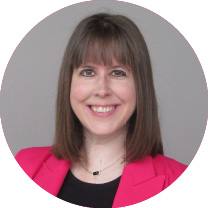 Over the past decade, the number of economically disadvantaged students in Cy-Fair ISD has risen nearly 20 percent to encompass almost half the district population. In order to meet the needs of the growing population, the school district and external organizations like Cy-Hope have implemented a number of programs in the past few years.
Over the past decade, the number of economically disadvantaged students in Cy-Fair ISD has risen nearly 20 percent to encompass almost half the district population. In order to meet the needs of the growing population, the school district and external organizations like Cy-Hope have implemented a number of programs in the past few years.
“I think our kids in Cy-Fair have a great opportunity to work with a diverse population that mirrors the state and what they will encounter when they enter the workforce,” said Linda Macias, CFISD associate superintendent for curriculum, instruction and accountability. “I think it’s also allowed us to look at different ways to teach our students.”
If more than 40 percent of the student body at a campus qualifies as economically disadvantaged, the school is eligible for Title I funding. Although more than 30 campuses in the district qualify for this funding, it is up to administrators to determine which campuses will receive the funding.
“We certainly have a number of campuses eligible for Title 1 funding, which has provided opportunities for campuses to have more programs, materials and support available not just to economically disadvantaged students, but all students,” Macias said. “Our campuses will tell you they are happy to be identified as a campus with Title 1 funds because they have resources for all kids.”
After a campus has received Title 1 funding, a committee is assembled to determine how the money should be best spent.
“They can decide whether to get a reading specialist to work with the kids, or put some money into Saturday school,” Macias said. “We make sure they’re abiding by the spending guidelines.”
In addition the district offers several extra educational camps for students who might need extra help.
“We established a camp summit for any student at any of the 53 elementary schools not reading on level,” Macias said. “A goal of this program is that we would have kids that would improve their reading levels and reduce the number of kids impacted by summer slide. [This is] when kids go home during the summer and for whatever reason—no books at home, no one taking them to the library—leave at a certain reading level and regress.”
Outside of the school district, local organizations like Cy-Hope have formed to reach out to economically disadvantaged children, implementing feeding programs, dual credit scholarships and Hope Centers.
“I was at a football game when I saw the statistics, which I think at the time it was 46 percent of students in Cy-Fair who were economically disadvantaged,” executive director Lynda Zelenka said. “I thought they were missing a decimal point.”
Shortly thereafter, Cy-Hope began its feeding program in fall 2011 at two schools with 80 bags of food and two volunteers with a partnership with the Houston Food Bank. Today the organization feeds 1,600 students at 65 schools each week with the help of 100 volunteers. Students who qualify for free and reduced lunch are able to take a backpack full of food home each weekend and bring it back on Monday for the next week.
“We consider it giving them a hand up,” Zelenka said. “Those kids, especially the young ones, can’t work for their food. It’s our way of helping them and giving them hope that when they have a full stomach, they can learn.”
The organization also has a Providing Opportunities Program that offers scholarships to students so they can take a dual credit course through Lone Star College.
“LSC-CyFair President Audre Levy recognized that many of the economically disadvantaged students weren’t participating in dual-credit courses because their families couldn’t afford the fees,” Zelenka said. “We wanted to fill in that gap for students who are capable of taking those classes and help them see a brighter future.”
Cy-Hope has since issued about 2,000 dual-credit or certification scholarships, which amount to $65 each.
“For some families, that’s a month’s worth of groceries for them,” Zelenka said. “When they have to make those kinds of decisions, it’s a no-brainer, so we want to get those kids the help that they need.”





